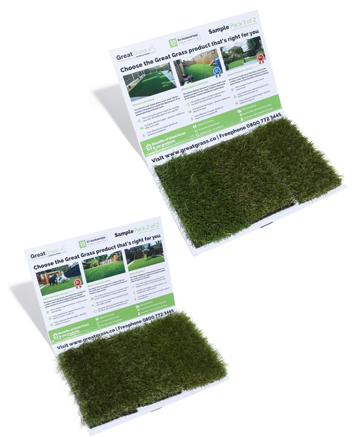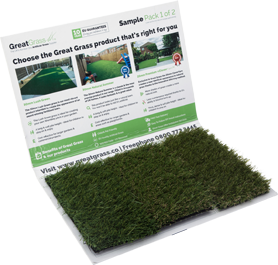In recent years, artificial grass has gone from being considered a poor man’s substitute to real grass to actually being considered a valid, easier to maintain alternative to it. Many spaces which previously featured natural lawns – such as homes, stadiums, school playgrounds, or even parks and golf courses – converted to artificial grass, attracted by the material’s unique combination of high performance, resiliency and ease of maintenance.
This quick expansion and rise in popularity may have led many home-owners and sports facility managers to believe artificial grass was an established material, which had simply happened to be discovered late in its lifespan and taken some time to gain traction across the western world. Upon conducting some research, however, those same home-owners may have been surprised to find the opposite was actually true – the material is relatively recent in its conception, and stands out for a relatively rapid rise to prominence within the western world.
As artificial grass experts, we here at GreatGrass make a conscious effort to keep our customers informed, whether through our blog and news feed or face-to-face, with customers who visit our shop or call in to speak with us. This, of course, involves answering a number of questions these customers tend to have, and one which pops up surprisingly often among technical specs and pricing queries is: when was artificial grass invented?
Since we know so many of our customers want to know this, and since we are aware that the history of the material we specialise in is interesting enough that it deserves to be widely shared, we have decided to dedicate our blog post for this week to answering that exact question, and offering our customers and readers a retrospective on the history of this increasingly popular material.
When was artificial grass invented, then? Read on to find out!
1960s: The Beginning
The history of artificial grass begins, like the history of so many other contemporary products, in the United States of America. Specifically, the material was first devised and designed in the mid-1960s, by a specialist team at the North Carolina University College of Textiles, spearheaded by the dean of the college himself, David Chaney. Chaney was interested in ascertaining whether a material could be invented which boasted all the best properties of grass, while eliminating its shortcomings. The answer to that particular query was yes, such a material could be devised, and his team devised it; that material, evidently, was what became known as Astroturf, and later artificial grass.
Once the technology behind this new material had been perfected, Chaney and his team began shopping the first few samples around to potential customers around the area, with a view to offering them a test run. Sports clubs and teams, in particular, were a prime target for the NCU College of Textiles team, and it was from this particular area of society that their first ‘guinea pig’ ended up emerging, in the form of baseball team the Houston Astros.
The year was 1966, and the Texas-based Astros wanted to use the new material devised by Chaney and his team to line the playing surface of their iconic stadium, the Astrodome. The research team could not have been happier to oblige, and later that year, the first official artificial grass sports pitch was unveiled to the Astros’ huge local fan-base. Shortly thereafter, any doubts players, coaches or fans might have had about Chaney’s invention were dispelled, when the material proved a more than worthwhile playing surface for the Houston team.
So great was the success of the first-ever artificial grass installation, in fact, that the material earned a brand-new name right there and then, inspired by the team that had first taken a chance on it: from that point forward, it would be known as Astroturf, a name used to describe it to this day.
1970s: The Expansion
Throughout the rest of the 1960s, artificial grass continued to expand its reach, eventually entering the home-making market as well as the sports one. By the early years of the next decade, the material was poised to experience its first big boom, which would occur shortly thereafter.
In fact, if the 1960s were the decade of genesis for artificial grass, the 1970s marked the beginning of its expansion. From its relatively limited use in the previous decade, the material went on to assert itself in a number of other markets, though the emphasis remained on its usage as a covering surface for sports pitches. The success of the Astrodome installation led a number of other outfits to be interested in testing out the technology, and such well-known stadiums as Franklin Field – home to major American football team the Philadelphia Eagles – replaced their previous natural surfaces for the new, high-performance ‘Astroturf.’
As this expansion across the sports industry continued, artificial turf began to make inroads into other areas of society, as well. Most notably, it made its first forays into the home and garden market, although it would take another two decades for it to fully establish itself in that particular field.
1980s-Present: Branching Out
By the late 1970s, Astroturf had established a firm grip on the sports-pitch covering market; however, its success among residential home and garden-owners remained at the exact opposite end of the spectrum. Most home-owners continued to view the material as tacky and cheap-looking, a stigma which it would take artificial grass several decades to brush off; as a result, sales for this material within the home and garden market were far below what its creators might have expected.
As the old saying goes, however, ‘if at first you do not succeed, try and try again’; eventually, by force of continuing to try and assert itself as a valid option to a real lawn, artificial grass did manage to find its niche in the home-making market. It would not be until the 1990s, however, that home-owners would start to admittedly fall in love with the material’s perennially verdant appearance and low maintenance requirements, and eventually embrace it as an alternative to often burdensome real grass lawns. Perhaps less than coincidentally, this acceptance coincided with an increase in realism for artificial grass rolls, which saw them go from obviously artificial to almost indistinguishable from the real thing.
From that point on, it has all been uphill for artificial grass. Its breakthrough into the home and garden market helped it overcome the stigma placed on it early in its existence, and two decades later, this material can truly be said to have surpassed (or at least matched) its natural counterpart where popularity and reach are concerned. Here at GreatGrass, we are proud to be helping that expansion, and we hope the article above has helped at least some of our customers and readers answer that ever-recurring question: when was artificial grass invented?


